JAPANESE HEALTH CUSTOMS
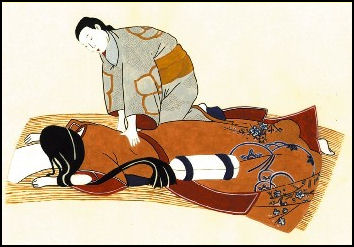
The Japanese take their temperature by placing the thermometer in the ear or in the arm pit not under their tongue. Some Japanese put plums on their temples to relieve headaches. Others touch their ear lobes if they burn their fingers because they believe that the era lobes are the coolest parts of their body.
The Japanese are great believers in massage when it comes to beauty and health. Mothers massage the stomachs of constipated infants to help them go to the bathroom. Fathers massage the feet of children they want to be athletes and elderly massage their faces to keep their skin looking good.
Good Websites and Sources: Danny Choo on Ear Cleaning in Japan dannychoo.com ; Questions on Hygiene in Japan japanexplained.wordpress.com ; Statistical Handbook of Japan Health Care and Public Hygiene Section stat.go.jp/english/data/handbook ; 2010 Edition stat.go.jp/english/data/nenkan ; Modernity of Hygiene in the Meiji Era, 1868-1905 ihp.sinica.edu.tw ; Toilets in Japan: Good Photos at Japan-Photo Archive japan-photo.de ; Wikipedia article Wikipedia ; Japan Times Article search.japantimes.co.jp ; Tokyo Toilet Map with Pictures asahi-net.or.jp ; Toilets: Japan links.net/vita/trip/japan/toilets ; Toto Washlets totousa.com ; Bathing Customs Rituals and Etiquette at Japanese Public Bath Fabulous Travel ; Bathing Etiquette sentoguide.info ; Eating and Drinking Customs: Essential Japanese Guide essential-japan-guide.com ; Sushi Etiquette homepage3.nifty.com ; Right Way to Eat Sushi snippets.com ; Drinking Customs japanvisitor.com
Links in this Website: HEALTH IN JAPAN Factsanddetails.com/Japan ;HEALTH CUSTOMS IN JAPAN Factsanddetails.com/Japan ; HEALTH CARE IN JAPAN Factsanddetails.com/Japan ; HEALTH CARE PROBLEMS IN JAPAN Factsanddetails.com/Japan ; ORGAN TRANSPLANTS IN JAPAN Factsanddetails.com/Japan ; HIGH TECH MEDICINE AND MEDICAL ADVANCES IN JAPAN Factsanddetails.com/Japan ; DISEASES AND HEALTH PROBLEMS IN JAPAN Factsanddetails.com/Japan ; HANDICAPPED PEOPLE IN JAPAN Factsanddetails.com/Japan
Good Websites and Sources on Health and Health Care: Statistical Handbook of Japan Health Care and Public Hygiene Section stat.go.jp/english/data/handbook ; 2010 Edition stat.go.jp/english/data/nenkan ; News stat.go.jp ; World Health Organization Japan who.int/countries/jpn ; Center for Disease Control in Atlanta CDC ; Medical Information for Foreigners pref.osaka.jp/iryo/medicalinfo ; Medical Resources by region compiled by U.S. Embassy /tokyo.usembassy.gov ; Japanese Government Organizations: Ministry of Health, Labour and Welfare mhlw.go.jp/english ; National Institute of Public Health niph.go.jp ; National Institute of Health Sciences nihs.go.jp ; National Institute of Health and Nutrition nih.go.jp/eiken
Surgical Masks in Japan
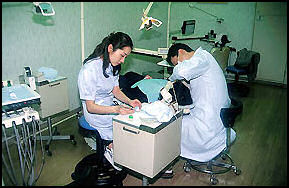
Japanese dentist People wear surgical masks when they have colds to prevent people from getting their germs. They also wear them when they have hay fever to keep from breathing in pollen or when they are worried about picking up germs from other people. The use of the masks began during the flu pandemic in 1919 The practice is common throughout East Asia, where you can buy colored ones with Hello Kitty images and messages like ACHOO! and ON THE ROAD TO RECOVERY! Nowadays, there are jewel-studded masks with luxury-brand logos, one that stops lipstick from smearing, and enough colors to allow the wearer to coordinate any outfit.
John M. Glionna wrote in the Los Angeles Times, Over the years the Japanese attachment to surgical masks “has moved from health precaution into the realm of fashion accessory and even psychological crutch. On some spring days, it seems every other commuter in the capital is wearing one — bike riders, runners, men in suits and women in heels dashing for the subway.Some women wear the masks if they haven't had time to apply their morning makeup. The shy like the anonymity the mask offers, according to media reports here. Lower faces shrouded in white, eyes hidden by sunglasses, some people look more Invisible Man than human. [Source: John M. Glionna, Los Angeles Times, May 16, 2011]
Historians say Japanese began putting on face masks nearly a century ago, wearing cloth and brass-wire coverings as protection from factory pollution and, later, influenza epidemics. In recent years, the surgical masks became popular when the SARS epidemic swept other parts of Asia.
In a culture that emphasizes the good of the group over the individual, the coverings play an important role: In flu season, many people wear them not just to filter the air they breathe, but to keep from spreading their germs to others, especially since blowing one's nose in public is frowned upon. During long commutes on crowded subway cars, many Japanese see wearing a mask as their civic duty — a concept seized upon by advertisers.”
Demand for surgical masks shot up during the swine flu scare in 2009. Manufacturers responded by offering masks in a wide range of shapes, colors and materials. Demand for masks has also increased as the number of people allergic to cedar pollen increases and due to radiation concerns associated with the Fukushima nuclear power plant crisis. Sophisticated masks adhere to the contours of the face and require no ear loops. Ones designed for women are claimed to not affect make up.
Surgical Masks and Fukushima Radiation
Surgical masks became more of a common sight after concerns about official rose after the meltdowns at the Fukushima nuclear power plants. John M. Glionna wrote in the Los Angeles Times, For years, the 26-year-old Tokyo native had resisted the urge to follow the millions in this city who don face masks during the "wheeze and sneeze" hay fever and flu seasons to protect against allergens and help stop the spread of germs. [Source: John M. Glionna, Los Angeles Times, May 16, 2011]
This year, Funayama joined the pack. But it wasn't pollen that concerned him; it was radioactive isotopes. "I'm worried about the air in Tokyo," he said. "The radioactivity is all around us. Who knows what we're breathing in?"
Government officials are adamant that Tokyo's air is safe to breathe, but some residents aren't taking any chances. Since the disaster, sales of surgical masks have jumped, sellers say. "Customers are buying in bulk now," said a clerk at a crowded pharmacy in the popular Shibuya district. "For a while, we couldn't keep enough masks in stock. Everyone wants them."
Experts differ on how much radiation protection the thin piece of cotton provides. "No mask will protect you from radiation," the 23-year-old office worker said. "If it's in the air, we're already covered in it." Robert Kelley, a nuclear engineer and former contractor for the U.S. Energy Department, said the masks would stop larger "dust-sized" particles, but not gases. "They probably make the wearer feel better," he said. "I wear one when I am doing dirty work like sawing or sanding, because it does keep my face and nose cleaner and I feel safer about big dust bits going into my lungs. But the smaller the bits, the less the paper mask will do."
Others say that even the cheapest mask is better than none to prevent sickness from airborne radioactive isotopes. "Ideally, people should wear a mask, but even breathing through a wet handkerchief or cloth will help to serve the purpose of substantially lowering inhalation of radioactive airborne particles in an emergency when no specialized masks are available," said Elena N. Bodnar, director of the Chicago-based Trauma Risk Management Research Institute, who treated victims of the 1986 Chernobyl nuclear meltdown in the Soviet Union. Funayama says he won't be taking off his surgical mask any time soon. "Radiation is invisible," he said. "It scares me."
Japanese Doctor Customs
People can see a doctor in a hospital, clinic or doctors office, sometimes visiting the same doctor many days in a row for treatment. Doctors often see many patients in a day, spending only a few minutes with each one. Often, Japanese go to pharmacies and get advice on illnesses and medicines from pharmacists in cases where Westerners would go to a doctor.

neonatal care unit Doctors and family members often don't tell cancer-stricken patients ot terminally patients that they are seriously sick. A patient with inoperable pancreatic cancer, for example, is told that he or she has pancreatitis. One doctor told the Washington Post, "Many doctors do not tell the truth about cancer because they do not want patients to be disappointed and lose the will to live."
Blood selling was common in Japan until the 1960s. Some died from excessive blood selling and others contacted diseases from tainted blood.
Giving Birth in Japan
Japanese women generally don't take any painkillers, anesthesia or an epidermal (an injection to the spine that numbs the lower half of the body) when they give birth because they believe that these forms of medication are unnatural. Most American women get an epidermal but less than 10 percent of Japanese women do.
Japanese doctors are reluctance to perform Caesareans, and as a result sometimes baby become permanently handicapped from lack of oxygen due to a difficult deliveries that could have been avoided were a Cesarean performed.
Women call their uterus a "baby palace." Sometimes small Japanese women have small vaginas, which are sometimes cut during child birth to make room for the emerging baby. Some women complain that their genitals look ugly after the procedure.
Childbirth has traditionally been viewed a dirty, polluting act. In the old days special “patrician huts” were built for women in childbirth away from their places of residence. Even empresses were sent back to their paternal homes to give birth. In Ise, all babies were delivered on the bank of the river opposite the Shrine.
Until the 1950s most women gave birth at home and midwives were key to delivering babies. These days many nurses are trained in midwifery skills and the number of midwives has dropped to 26,000 in 2004, about half the number in the 1950s.
Nearly half of women give birth to babies in small clinics run by individuals with 19 or less beds. The idea of a father being present at childbirth is still somewhat novel in Japan.

High-Tech Toilets, Clean Money Machines and Bacteria Technology
Matsushita and Toto are working on smart toilets that measure "input" and "output" and send the information to health care services. These toilets talk to their users, take their weight and blood pressure, measure body fat using electric currents, measure chemicals in the urine to determine glucose levels and, someday, cancer, and send results online to medical facilities. These toilets are being offered for $4,000 in new houses built by Daiwa house. Some new toilets have ejector-seat like contraptions that helps elderly people and handicapped people get off the seats.
In the late 1990s, Japanese banks introduced ATM machines that dispensed clean money. These machine take in wrinkled and dirty yen banknotes, feed them through rollers, heating them to 392̊F and dispensing the notes clean, crisp and 90 percent bacteria free. "Virgin money," Evelyn Richards wrote in the Washington Post, "plays an especially key rule at weddings, where cash is the favored gift. No respectable Japanese would give anything but untainted bills."
The clean money machines were invented by Hitachi by accident. In the process of inventing a process to iron out crumbled bills with 392̊F heat, they discovered that the high temperature also kills bacteria. Explaining why disinfected cash is popular with young women, a bank spokesmen said, many "say they don't want to touch things handled by middle-aged men."
Other appliances with health gimmicks include refrigerators that spray food with negative ions, air-purifying vacuum cleaners, ultrasound washing machines and filters that add Vitamin C to shower water. Sony uses bacteria produced cellulose to make $4,000 headphones. The waxlike cellulose is molded into speak diaphragms that have extraordinary acoustic qualities.
Antibacterial Products in Japan
A multibillion dollar industry has grown up to address concerns by Japanese about germs. Among the more than 600 antibacterial and germ fighting products on the market are antiseptic-dispensing pens, bacteria-resistant bicycle handgrips, disease-fighting bathroom ceramics, anti-bacterial calculators, and germ-combating socks and slippers. The are also antibacterial wigs, ATM cards, disposable karaoke microphones, staplers and floppy disks. Toyota makes cars with antibacterial steering wheels and gear shifts, and Panasonic produces an antibacterial clothes dryer. [Source: Sonny Efron, Los Angeles Times, December 15, 1996]
The antibacterial products are so popular that entire aisles in some stores are devoted to them and even then the stores can't keep up with the demand for some products. Most of antibacterial products are simply ordinary products that have been treated with anti-bacterial chemicals. A ball point, for example, that sells 35 cents without antibacterial chemicals can sell for $1.75 with them. One pharmacist told the Los Angeles Times, "In general, 100 yen worth of product can be made antibacterial for one yen" by adding substances such as such as cedar, horseradish, green tea or chemical known as zeolites.
The cleanliness craze began in 1987 with the introduction of Commuting Comfort, a brand of men's dress sock woven with odor-reducing antibacterial thread that claimed to get rid of athletes foot. One of the oddest and most expensive antibacterial products is "Mr. Tongue," a $336 pure-sliver tongue scarper used for removing bacteria from the mouth.
Some products use microbes as key ingredients rather than kill them. In the 1990s, a microbe-made product called “Attakku” (Attack) captured half of Japan's two- billion-dollar laundry detergent market. The key bacterium, which was discovered in a rice field, survives alkalinity that is lethal to most microbes. And what makes it so effective is the fact it penetrates dirt-holding niches in cotton fabrics. [Source: Thomas Canby, National Geographic, August 1993]
Health Drinks and Foods in Japan
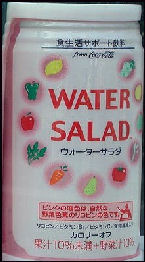
Japanese are big purchasers of all-purpose, over-the-counter "feel-good" concoctions in small bottles. Many of them are energy drinks with large amounts of caffeine giving them their punch.
Some Japanese believe ut is a good idea to have a glass of water before going to bed, the idea being that the body lose water through perspiration so it is good idea to be hydrated before going to bed.
A Japanese proverb goes: “Good medicine tastes bitter.” Many Japanese drink vinegar as a kind of health tonic, with black vinegar made from rice, barley or brown rice said to be the best. Some drink it straight up. Some gargle with it. Others consume it in a wide variety of vinegar drinks. Most consumers are women who believe that drinking vinegar reduces fatigue, lowers blood pressure, reduces cholesterol and eases joint pain. Drinking heated apple vinegar is said to cleanse the stomach.
See Food
Smoking and Health in Japan
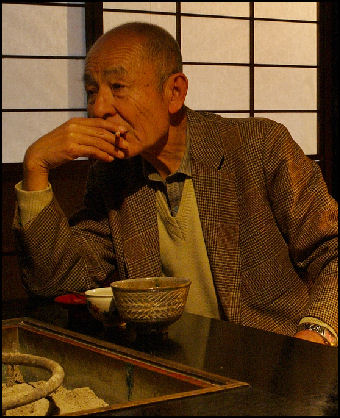
Smoking kills 100,000 people in Japan, or one in 10 deaths, every year. Each year 80,000 men and 10,000 women get smoking-induced cancer. This is 20 percent of all cancer cases in Japan.
Smoking accounts for the highest levels of premature deaths in Japan, triple the number of suicides and ten times the number of traffic fatalities. One study found that Japanese men who smoke are likely to live 3½ years less than men who don’t smoke.
In 1998, lung cancer surpassed stomach cancer as Japan's deadliest form of cancer Men who smoke are 1.6 more times likely to get lung cancer than nonsmokers and former smokers were 1.4 times more likely. Still, lung cancer and smoking death rates are lower than in the United States where less people smoke.
Many doctors and people who make decisions about smoking smoke. In the early 2000s, the health budget for smoking was only $180,000. By contrast the budgets for AIDS prevention is $94 million. AIDS only kills 45 people a year,
The tar and nicotine figures are determined using outdated methods. The true figures may times higher. Second hand smoking is more of a problem in Japan than it is in other industrialized countries in part because smoking is still allowed in many places — McDonald’s, other restaurants, public buildings.
Pills and devices such a nicotine patches and vareniclone ills (which prevents nicotine from attaching to receptor cells) that help smokers break the habit are covered by Japan’s health insurance.
Culture and Health in Japan
”Gojukata” and “katakori” are terms that describe a pain in the shoulders or arms that comes and goes and persists for months and then suddenly goes away. The best translation is “stiff shoulders” but the translation is not very good because gojukata and katakori tend to be caused by long periods of inactivity such as sitting through a long meeting and is best relieved with a massage.
“Taishitsu” is a general, holistic term that literally means “bodily nature” and is often described “the natural disposition of one’s body.” Each individual has a unique taishitsu but there are aspects of it that can be inherited. Taishitsu is not directly linked to particular diseases but it can shape the way a person is protected from a disease or be predisposed to catching it.
The anthropologist Margaret Lock compared symptoms of menopause typically reported by North American women and Japanese women and concluded that while menopause causes similar changes in all women the ways in which individuals experience those changes varies greatly between North Americans and Japanese, suggesting that the way an individual experiences a physical condition is somewhat shaped by culture.
“Lotus in the Fire: the Healing Power of Zen” is book by Jim Bedard, a sales manager who came down with a rare form of leukemia and was given a 15 percent chance of living and credits his complete recovery to the healthy powers of Zen.
Negative Ions and Oxygen in Japan
Oxygen bars and salons were popular in the 1990s and early 2000s and are still around. For about $20 a session people sit in comfortable easy chairs and get a foot and head massages from machines while breathing air enriched with 40 percent oxygen pumped in by a generator. Regular customer claim the oxygen sessions make them refreshed and relaxed, and they increase their energy and regenerates cells. Consumers can also buy oxygen-enriched products like cosmetics, bottled water and sprays and even their own portable air suppliers.
Anything enhanced by negative ions is also popular. Hotels offers negative ion sauna baths. Desktop computers and seat belt covers come with negative ion dispensers. Pharmacies sell special brushes that use negative ions to reduce dandruff. Jewelers promote tourmaline necklaces which are said release negative ions.
Among the negative ion products available in Japan are key chains, trash bags, hair dryers, vacuum cleaners and pet toys. Negative ion stuff is not cheap. Negative ion school backpacks with “specially prepared natural minerals” sell for $200. Beds that release negative ion around the head go for $2,500. A negative ion humidifier cost $50 more than the exact same humidifier without the ions. Negative ion underwear for men and women will set you back $40 per garment. Air fresheners that release negative ions into a house cost about $350.
Ions are electrically-charged atoms. A negative ion is an ion with a negative charge. These ions occur naturally in forest and streams. Negative ion advocates claim that people feel good when they are in these environments not necessarily because the nature is beautiful but because of the presence of negative ions. They also claim that negative ions help people relax and concentrate and offers relief to fatigue, menopause and insomnia. Scientists assert there is no evidence that negative ions make any difference one way or the other.
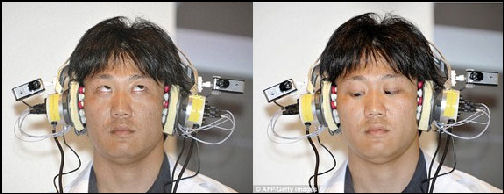
Stress Reduction Techniques and Products in Japan
A multi-million dollar industry has grown up around stress reduction. Stress-relieving salons offer things like $10, 10-minute shoulder massages, reflexology lessons and visits to isolation tanks with soothing music and psychedelic lights. Among the stress-relief products on the market are aromatherapy lamps, stress-relieving CDs, herbal teas, sleeping pills and relaxation aids such as $150 robot jellyfish and $11,000 virtual fish tanks.
To relieve stress some Japanese go 'mind gyms' where they relax in special coffin size cubicals and listen to music and wear goggles with pulsing lights. Some stress relief salons feature aromatherapy capsules that offers scents, vibrations, relaxing music, psychedelic lights and heaters that can raise the temperatures to as high as 79̊C. A 30 minute stay in these capsules cost around $30.
Researchers at Matsushita Electric Works developed a virtual-reality, massage armchair with built in speakers and a headset that shows three-dimensional images of misty mountains, scenic valleys and beautiful sunsets. The vibrations and movements of the chair respond to signals from a heart-beat monitor attached to the users ears. The company spent $2 million developing the chair and expects stressed out salarymen to be its biggest customers.
In Tokyo a number of exhausted company workers are seeking relief with IVs. The Yebisu Garden Place Clinic in Ebisu, Tokyo offers a number of different IVs including ones that promise to help workers overcome fatigue and ones that claim to help users feel more healthy and attractive.
Haruka Takahashu of the Yomiuri Shimbun went to Ebibsu to try one of the treatments. After a few questions about her physical condition a nurse asked here, “Which menu item would you like to have today?” A basic drip of 50cc glucose solution cost ¥2,000 and is supplemented with additional treatments that cost extra such as the “comprehensive beauty care” for ¥3.500, “fatigue recovery” and “cosmetic whitener,” each for ¥3,000, and “energizing” and “detoxification” treatment for ¥2,500 each.
“I picked the “comprehensive beauty care,” which is designed to generate collagen and get rid of pimples...Upon my request, the nurse took an ampule and blended it with basic drip. The transparent liquid instantly turned a vivid orange...When the needle was stuck into my vein, the orange-colored fluid started dripping through the tube rhythmically...before long, I noticed a garlicky taste gradually spreading in my mouth...”Don’t worry? It’s caused by a Vitamin B group substance,” the nurse said...It took about 10 minutes until the drip was completed. When I looked into the mirror, my skin seemed fresher than before I received the drip.”
Image Sources: 5) Golden Bamboo 6) Toto 9) Exorsyst blog, others Japan-Photo.de
Text Sources: New York Times, Washington Post, Los Angeles Times, Daily Yomiuri, Times of London, Japan National Tourist Organization (JNTO), National Geographic, The New Yorker, Time, Newsweek, Reuters, AP, Lonely Planet Guides, Compton’s Encyclopedia and various books and other publications.
Last updated October 2011
